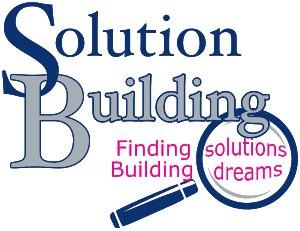Never Be Satisfied with Mediocrity

Doing What It Right Is More Important Than Fast and Cheap Currently we are in the process of repainting our 102-year-old home. Several years ago, I install three new windows and had never finished the exterior trim (this is a topic for a future discussion). As part of the painting project I was making […]
Delegating – The Thing I Suck at Most of All

And What I Need to Do to Get Better at It Okay, today’s confession. I really am not good at delegating. This is something that I have always struggled with. Even though I know that I need to…I don’t. I try. I come up with new ideas and plans and nothing seems to work. […]
It’s Friday the 13th, You Better Be Careful

Take Control and Don’t Leave Your Life to Chance When I realized it was “Friday the 13th”, I began thinking about all the different superstitions, good and bad, that people have. This is especially evident with athletes, for example it has been reported that basketball superstar Michael Jordan wore the same pair of shorts […]
Little Things Are What Big Things Are Made Of

The Importance of Paying Attention to Details Big things start out as little things. I’m sure that you’ve heard it said, “Don’t sweat the small stuff.” I would argue the opposite. I think the small stuff is exactly what we should sweat. Little things accumulated over time are what big things are made of. […]
The Hard Truth About Solid Surface Flooring – Part 2

Working Through the Questions to Get to the Right Answers Last week we went through questions to ask when looking for the right solid surface flooring. I pointed out the importance of starting with the why. Then I went through an overview of the other questions – product choices, appearance, durability, cleaning and maintenance, […]
The Hard Truth About Solid Surface Flooring – Part 1

You Need to Ask the Right Questions If You Want to Get the Right Answers Over the last several years floorcovering has gone from a few simple choices to so many that it can make your head spin. It used to be that carpet, sheet vinyl and wood were your main options. Now the […]
Who Should I Blame for Being Too Busy?

Too Much to Do Is, “Self-Inflicted Pain” I have too much to do and not enough time to do it. We had all heard someone say this or said it ourselves and for sure we have all felt it. Just over the last few days there have been numerous times in a variety of […]
Taking Off the Blinders Helps You See the Big Picture

Without A Vision…You Run into Things One of my core values is, “take off the blinders, be more observant”. I told you in a previously post that I would go into each of them in more detail later, so here’s the third one. Core values are foundational for the life that God designed for each […]
How to Determine If Someone’s Trash Can Be Your Treasure

What’s the Purpose for Your Re-purpose Recently my web and social media coordinator, Stacey, gave me a list of questions from her husband, Daniel. One of them was “repurposing ideas?”. I am assuming that he is asking about some specific ideas and that list would be pretty long. So, this answer may not be exactly what he […]
The Importance of Intentionality for Building Your Dream Life

Because It Isn’t Going to Magically Build Itself For years people have asked me where I came up with the business system and procedures that I use. As I thought about it, I realized that my business and life had been developing for years without much intentionality. After my accident in 2012 it caused me […]
